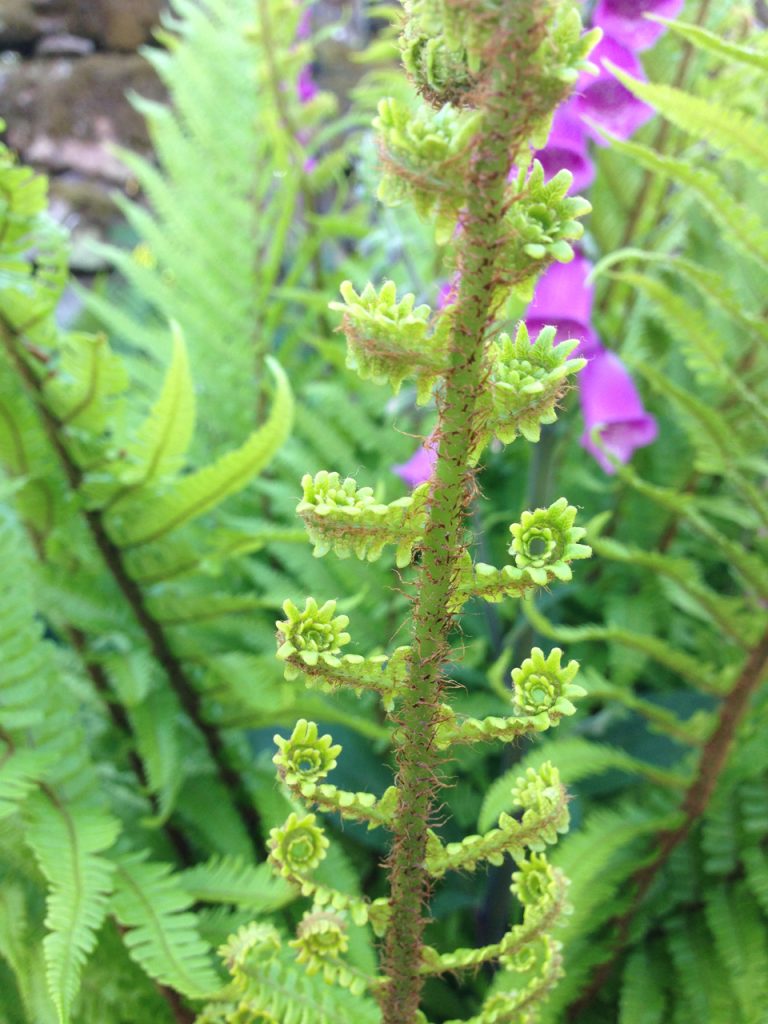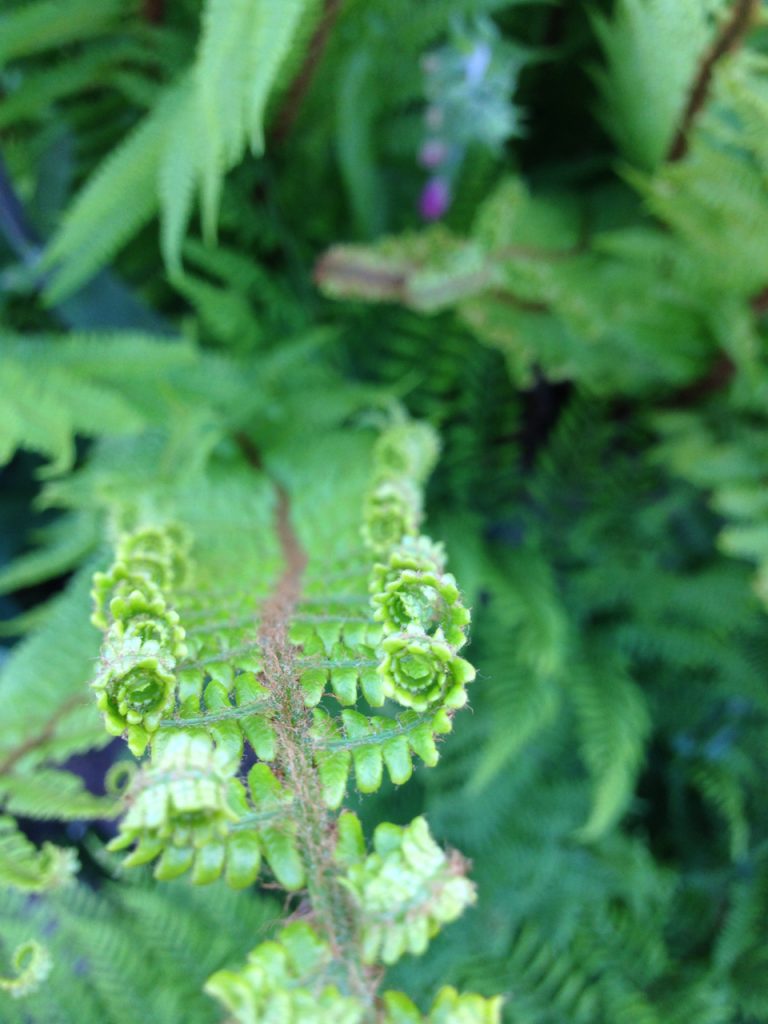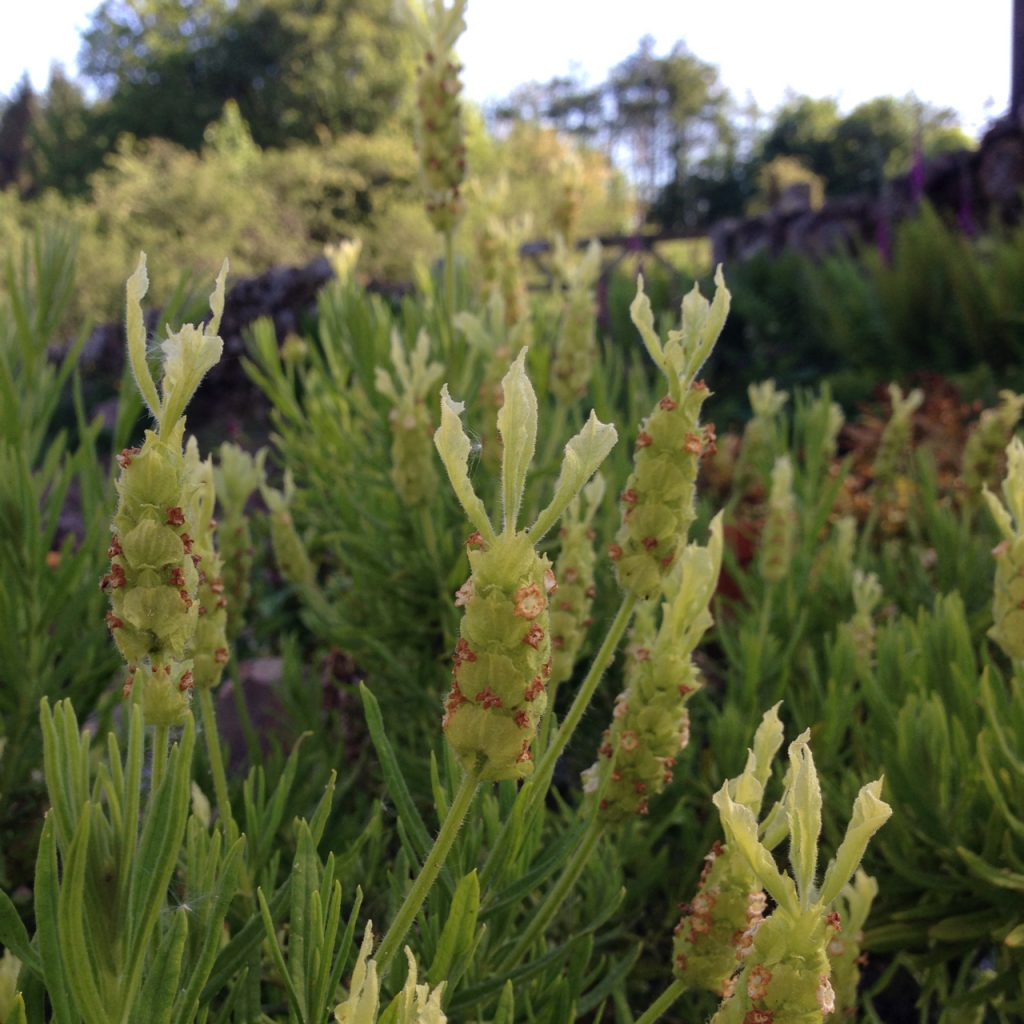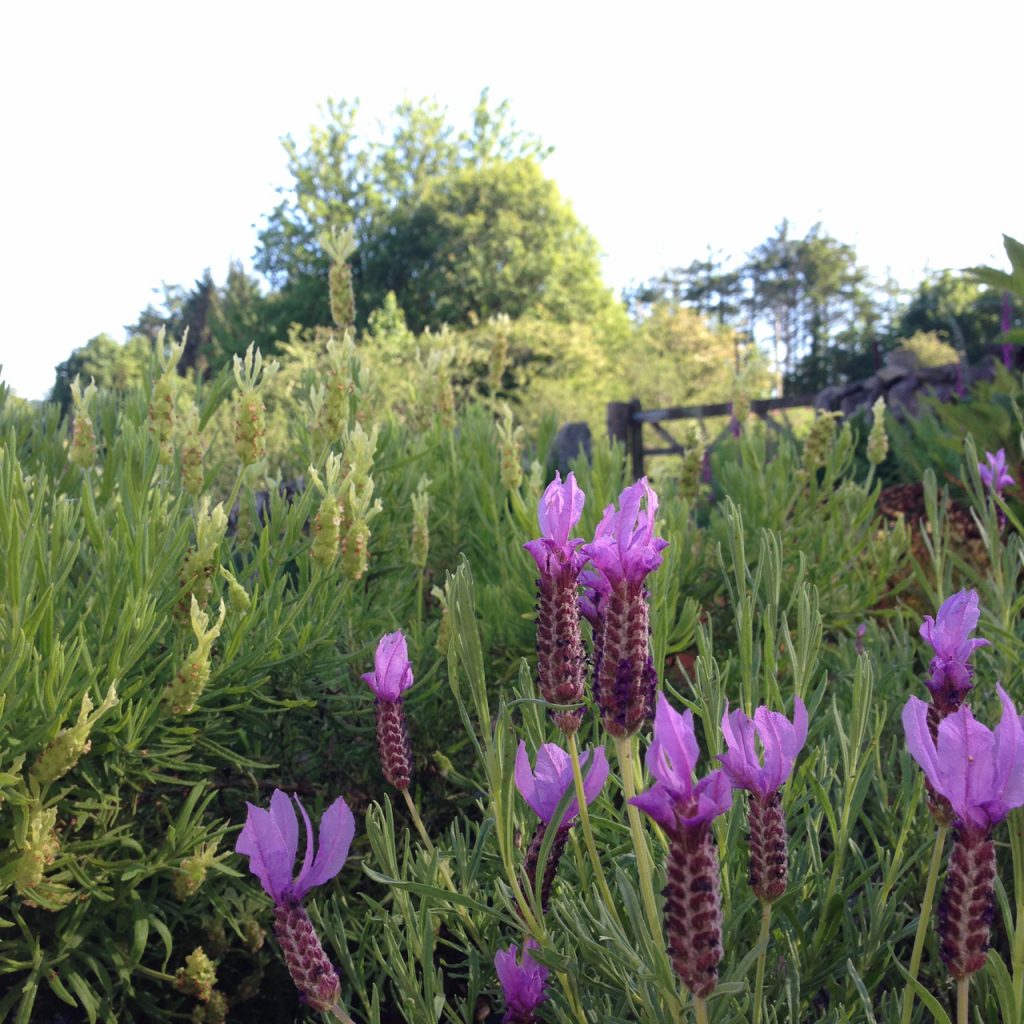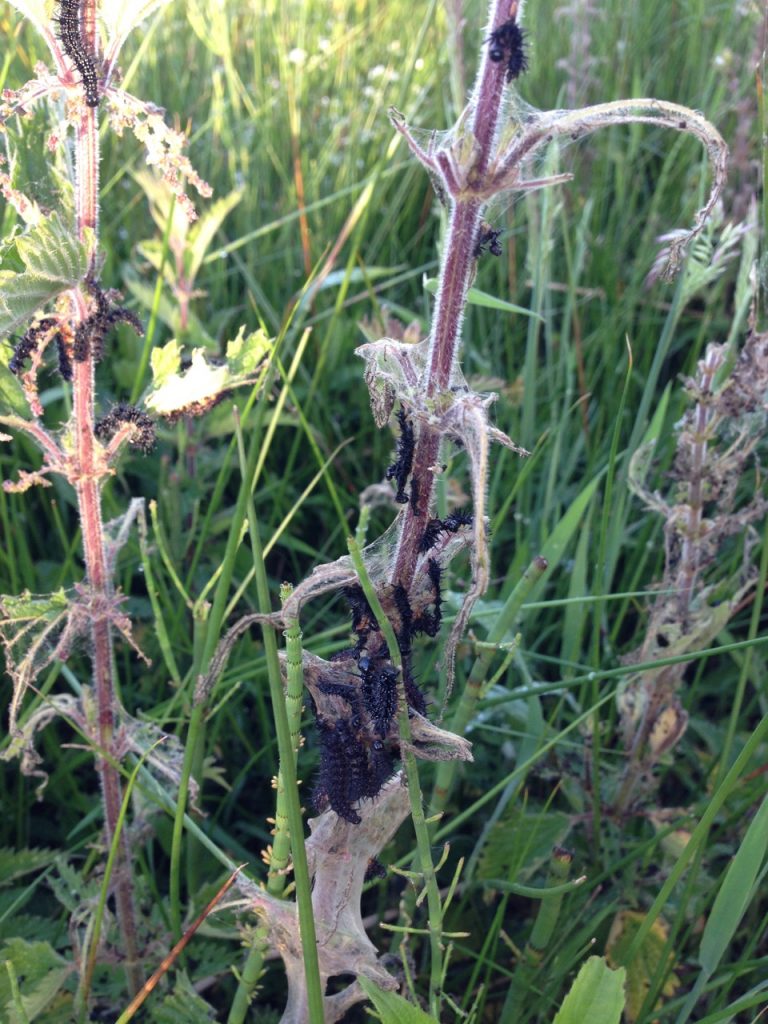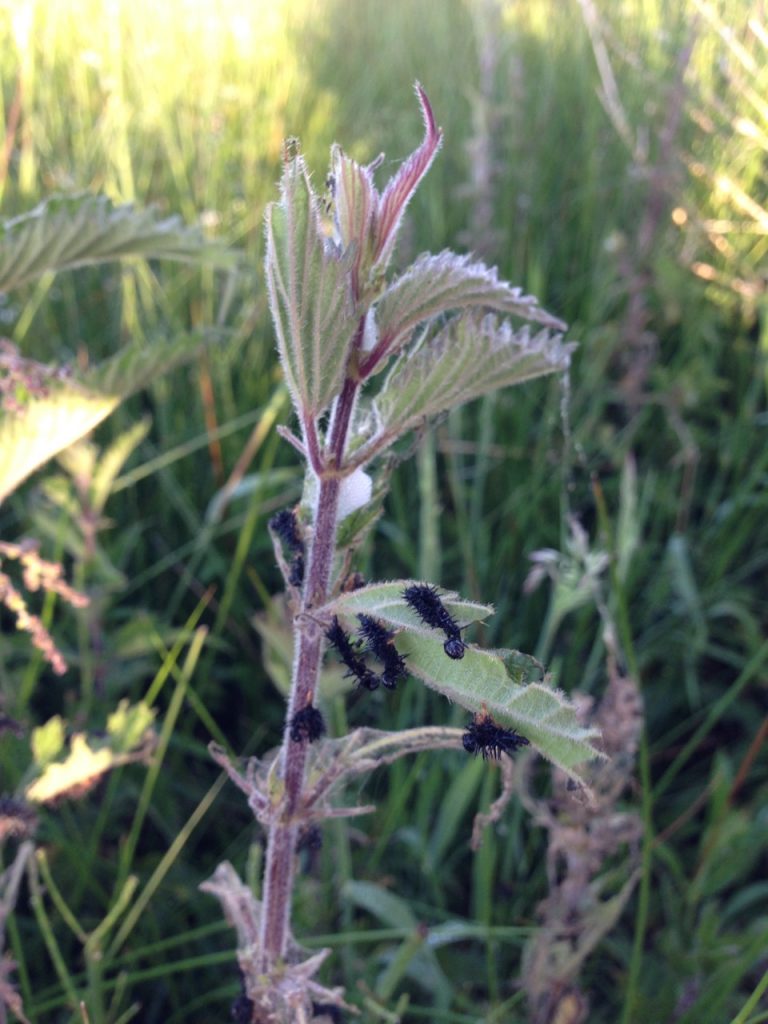June
As we head into June and the longest days of the year, the countryside takes on the nostalgic characteristics of the beginning of Summer. The trees are magnificent in their new green perfection, lower branches touch the long grasses which shimmer with swathes of different unripe seed heads. Wildflowers dot the ground with colour; nettles and ferns decorate stone walls and boundary edges. Foxgloves start their tapered firework displays, meadowsweet and ammi froth around the water edges. Hawthorn trees turn entirely white with blossom and the warm, pollened air swarms with bees and insects, everywhere is a sense of movement and current.
Mornings start early, around 4am with the crescendo of bird song on the dormer roof providing a surround sound experience! The weekend has been hot, the stream which had already been reduced to a trickle is almost completely desiccated. A few years ago part of the water course was dammed with some slates to make a small natural wildlife pool which has become a water source for all kinds of animals, deer, red squirrels, even a water shrew and over the last few weeks has been the only puddle remaining. In an attempt to save all the creatures in the thick silt I ran the hose into it and within minutes red damselflies appeared, a bullfinch flew in through the ferns and splashed about next to me, then a great tit and a frog.
Horsehair worm (Gordius sp.) that I mentioned last week, quite a few of them in the pond now.
Water beetle swimming and diving in the stream pond.
The cotoneaster hedge is swarming with small bees, impossible to count how many different species. It is near the garden table and each time you walk past there is an intensified vibrating buzz as they all lift off the flowers and move about. Whilst I was watching them, I heard a high pitched squeaking, and saw what looked like a red squirrel contorting in the grass before disappearing down the bank where the stream re-emerges from underground in the lower garden. When it reappeared, I realised that it was a stoat, with a large vole which it carried across the garden and over the stone wall.
The field by the house has reached it’s full meadow display, all different kinds of grass flattening one way and another in the gusts, making flat silvered surfaces. Between the grass tiny blue speedwell and buttercups are visible; as I walked to the view a young male roe deer ran out of the gorse towards me reaching about 6 ft away before it noticed and darted away into the woodland.
In the orchard, I am drawn towards the surprisingly loud sound of wasps chewing wood to make their nests; the wood piles are turning into mini gardens themselves; nettles, foxgloves and red campion are growing up through the logs making pretty wildlife islands. The old ash trees are so large that you can still sense their form through the feathery leaves, giants in the landscape, somehow holding their weight on huge horizontal branches so effortlessly. The bats fly from up here each night, around 10pm in the evening light, dipping and twisting in their light-speed aerial dance along the walls, around the garden and down the lane.
The wet meadow grassland has grown tall with reeds and wild grasses – quite an effort to walk through, but worth it to see the wildflowers and insects that live and breed in this habitat. Nettles here are covered with nests of peacock butterfly caterpillars at different stages of growth, these instars grow rapidly and shed their skins, which can be seen stuck to the leaves and protective communal webs that they build. There are five instars, developing from a small pale-translucent larvae to the more familiar velvet black and yellow spotted caterpillar.



